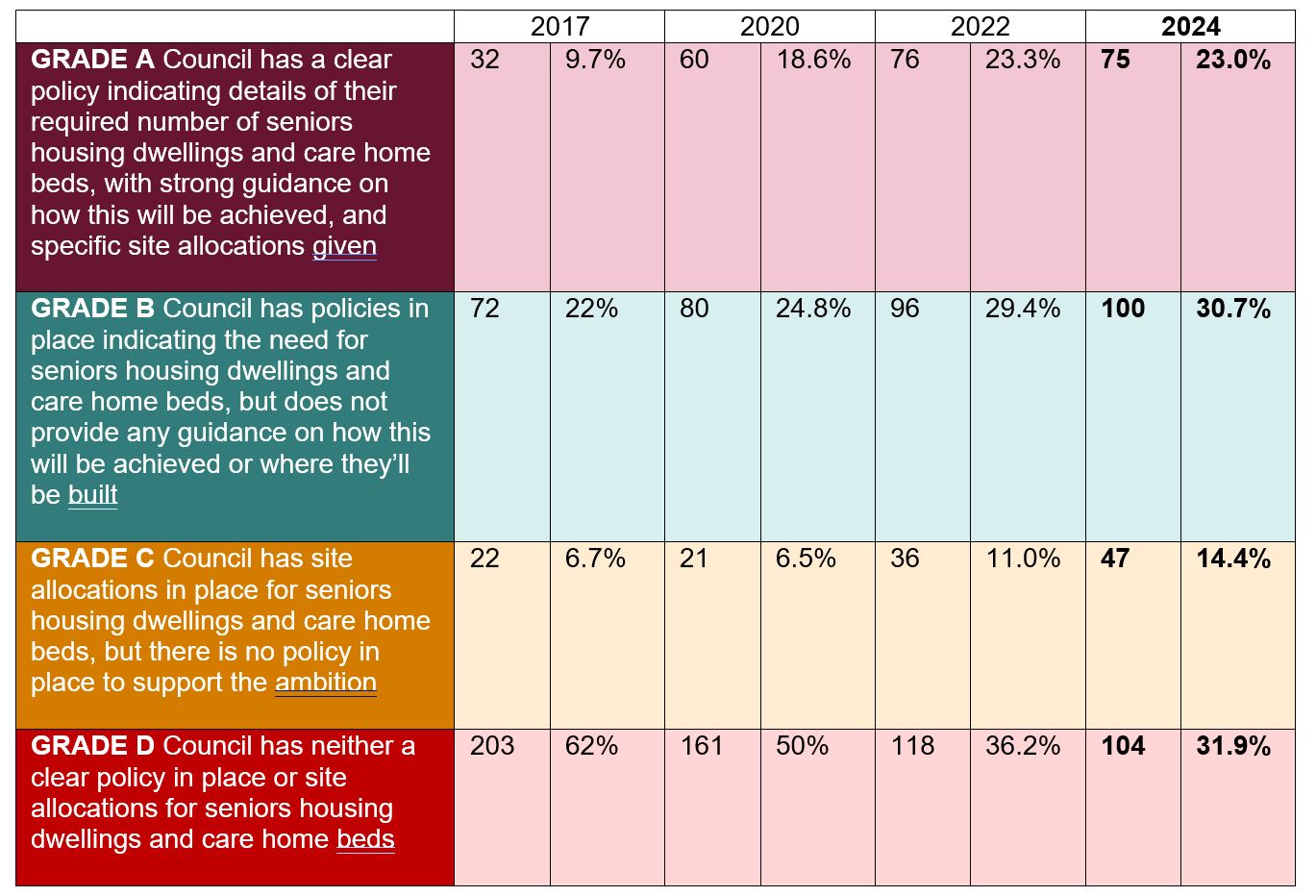Unlocking the potential for seniors housing – what needs to change?
Over the next 20 years, the over-65 age cohort is expected to grow at three times the pace of the national average.
4 minutes to read
The UK's population is rapidly aging. In 2023, around 11 million people in England were aged over 65. This equates to approximately one in five of us.
According to the Office for National Statistics (ONS), this number is projected to increase by 30.5% between 2023 and 2043, resulting in an additional 4 million people. Consequently, the need for local authorities to provide suitable and age-appropriate housing options for individuals in their later years is becoming increasingly urgent.
Yet, more often than not, planning policy has failed to keep up with these demographic shifts, according to our latest research working alongside law firm Irwin Mitchell.
Now in its fourth edition, the research analyses and grades local plans for all local authorities in England based on their approach to housing for seniors. The research focuses on whether they have either a policy for seniors housing or have made site-specific allocations for this use. This year, as in previous iterations of the report, we have supplemented that research by looking at: wider demographic changes, recent seniors housing delivery, residential pricing, and housing wealth.
The findings reveal only 23% of local planning authorities (75) have clear policies in place indicating details of their required number of seniors housing dwellings and care home beds, with strong guidance on how this will be achieved, and specific site allocations given. While this figure has more than doubled since the research began in 2017, there has been no movement in the last two years. The policies of the remaining 251 local planning authorities are lacking to some extent.
One hundred local planning authorities (30.7%) do have policies in place indicating the need for seniors housing dwellings and care home beds, but do not provide any guidance on how this will be achieved or where they’ll be built. A further 47 (14.4%) have site allocations, but there is no policy in place to support their ambition.
One-third of local planning authorities (104) have neither a clear policy in place or site allocations, meaning they are underprepared for the effects the UK’s aging population will have on their communities.

Pace of change stalls
Whilst previous versions of this research have shown significant progress, the pace of change has stalled over the last two years. Between 2017 and 2022, there was a 13.5% increase in English local authorities that had both adopted planning policies and allocated sites for seniors housing.
Between 2022 and 2024, the figure has remained static. There was an improvement in the number of local authorities who either had a policy or an allocation, but it is slight – at 1.3% and 3.4% respectively.
This static national picture masks an increasing number of regressions in the data. In our last survey, in 2022, thirteen local authorities had moved backwards when compared to their previous score. In 2024, the number of authorities whose position has regressed over the last two years stands at 34.
There are a variety of reasons for these changes, ranging from the overall age of the plan and the likelihood of allocations having been built out, a slow-down in plan progression, a failure to bring forward an allocation, or moving to a more generic policy concerned with meeting the needs of all demographics in their community (rather than being more specifically aimed at promoting seniors housing).
Four local planning authorities went from having a clear policy and allocated sites, to having neither. The preparedness of 30 other councils was also downgraded between 2022 and 2024, with 13 dropping by two rankings, and a further 17 dropping by one.
A new sense of urgency
And yet, despite this inertia, a sense of urgency over the need to get behind the sector finally seems to be taking hold. The Older Person’s Housing Taskforce is due to report later this year, and the Government’s support for the sector has been recognised – both in greater recognition in the NPPF itself, but also in the LURA. When brought into effect, LURA will place the Secretary of State under a legal duty to provide detailed guidance on how local authorities should meet the needs of the elderly population.
The introduction of National Development Management Policies will sit alongside (and, in some cases, override) a Council’s Local Plan policies. They have the potential to make a huge difference to the sector.
We are also seeing new entrants and increased activity in the market. New developers are entering the market, and rental products from existing providers is starting to take hold. population is rapidly ageing. In 2023, around 11 million people in E
Ultimately, though, a more consistent and supportive policy environment will unlock more supply, more propositions, and more choice for seniors.
Click here to download the full report, or for further information contact the Knight Frank Seniors Housing team.